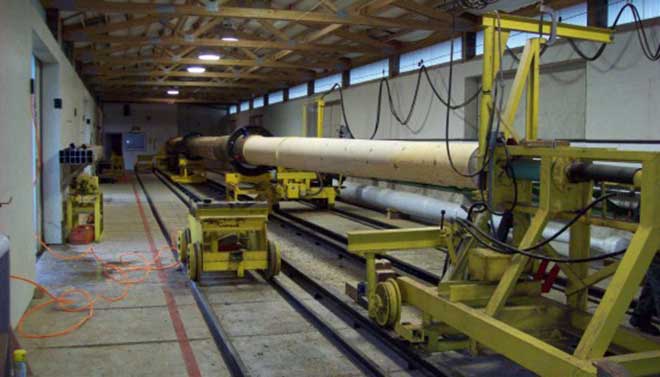 \
\
Gray's Harbor lathe can turn up to 122' long
Another interesting post by Marty McOmber on Three Sheets Northwest. Interesting how this tool was built.
Down at the Grays Harbor Historical Seaport, home of the Lady Washington and Hawaiian Chieftain tall ships, they know a thing or two about wooden masts, booms and yards.
But what a lot of people probably don’t know is that the organization’s spar shop happens to have what is believed to be the country’s largest lathe — a tool many of us last played with in high school shop class to make a table leg or candlestick.
Let me tell you, this ain’t your high school’s lathe.
Technically a “tracer lather,” it can spin and shape a log 40 inches in diameter and 122 feet long. It’s so big, the seaport had to construct a custom building to house it.
So when the historic Bellingham-based schooner Zodiac lost her main mast and boom last September, it only made sense that her crew look to the Seaport’s spar shop to fashion new ones for them. After all, it’s not something you could pick up at Fisheries Supply.





































